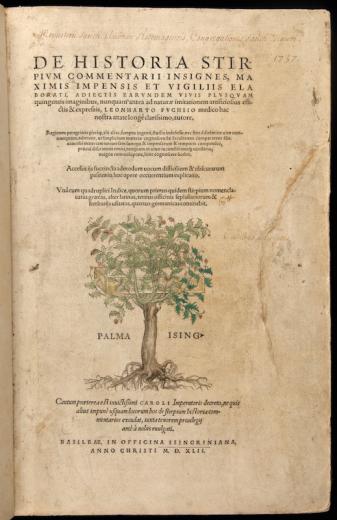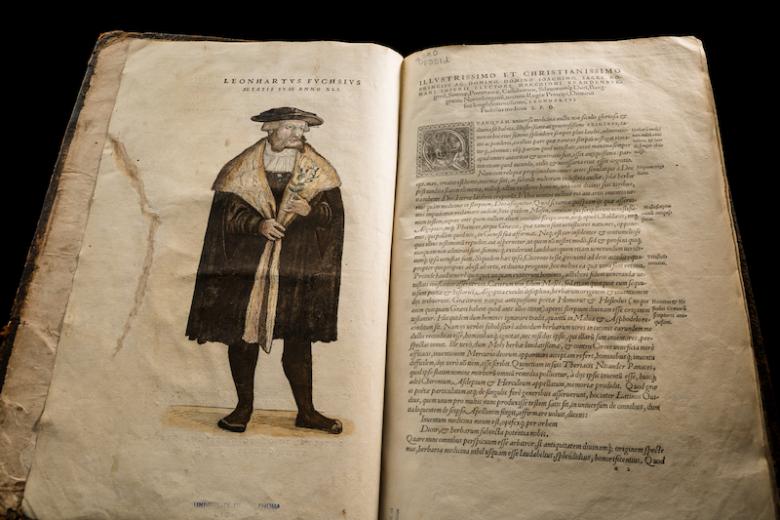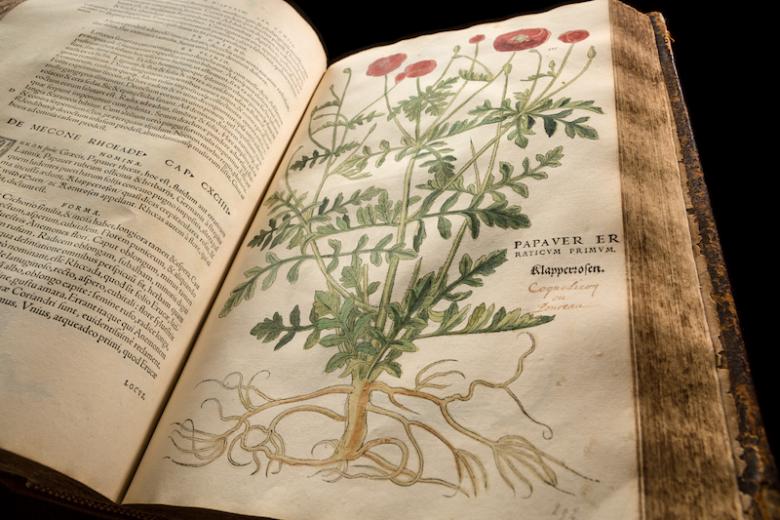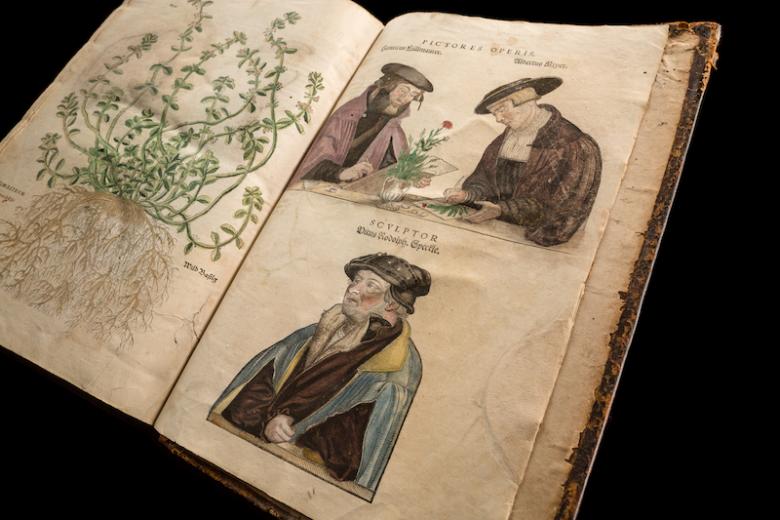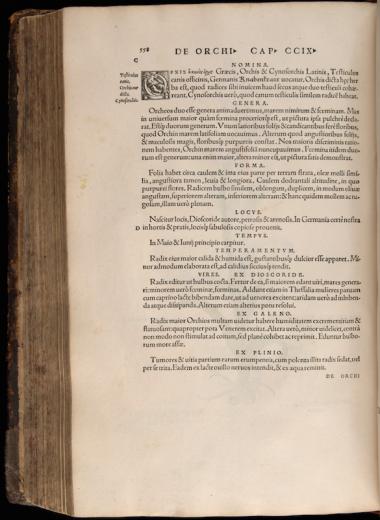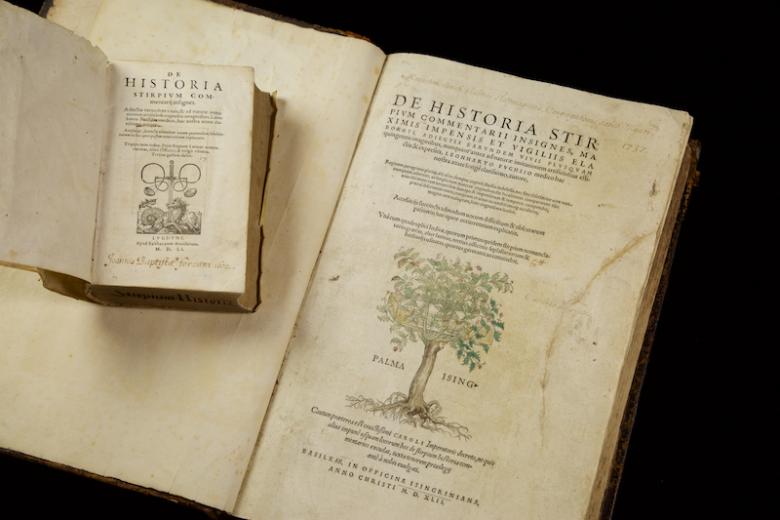Citation
Item Location
Fuchs extracted the best knowledge available from Galen, Dioscorides and Pliny. Fuchs gave each plant a German name as well as the traditional Latin. He described nearly 100 northern European plants unknown to previous physicians. Fuchs combined careful textual scholarship with striking depictions of German plants drawn from life. This work contains descriptions of 500 plants, 400 of which were native to Germany. 4 indices cross-reference plant names according to Greek, Latin, German and common apothecary usage. In a portrait on the verso of the title page he is depicted with one hand resting on his book, the other hand holding a plant for inspection. 3 portraits at the end of the work depict the craftsmen at work: Heinricus Fuellmaurer, the artist; Albertus Mayer, who transfered the drawings to the blocks; and a woodblock cutter, Veitus Rudolph Speckle. The skilled women who likely hand-colored the illustrations were not similarly honored. In collaboration they created over 500 woodcuts for Fuchs’ text, which often served as the basis for illustrations in later herbals.
Related Items
Resource Type: Book




